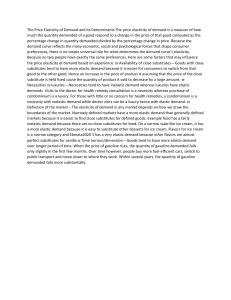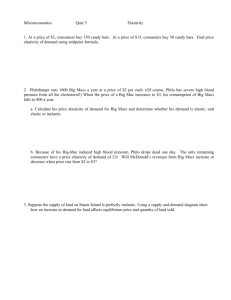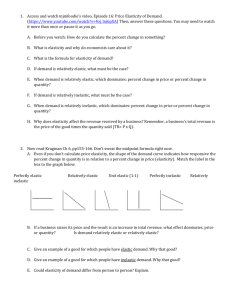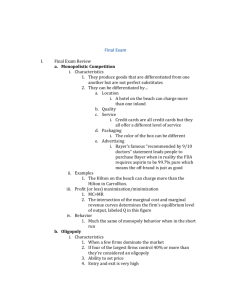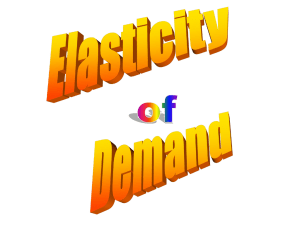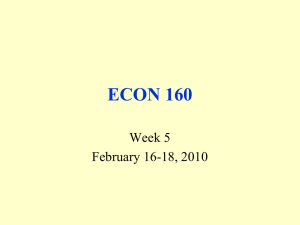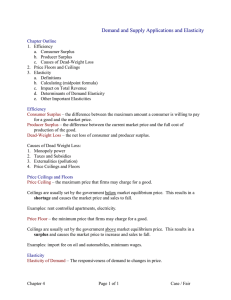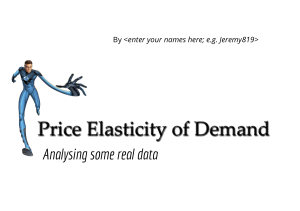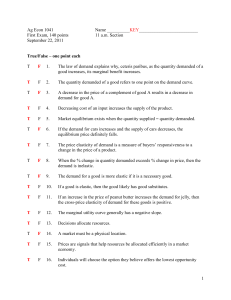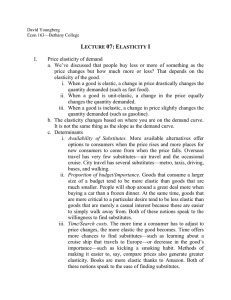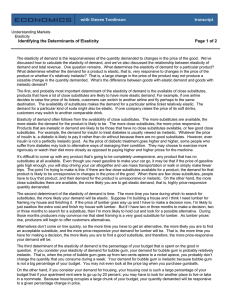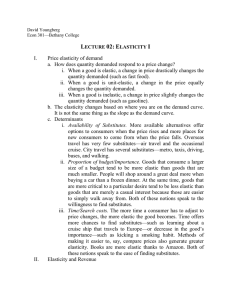Elasticity of Demand
advertisement
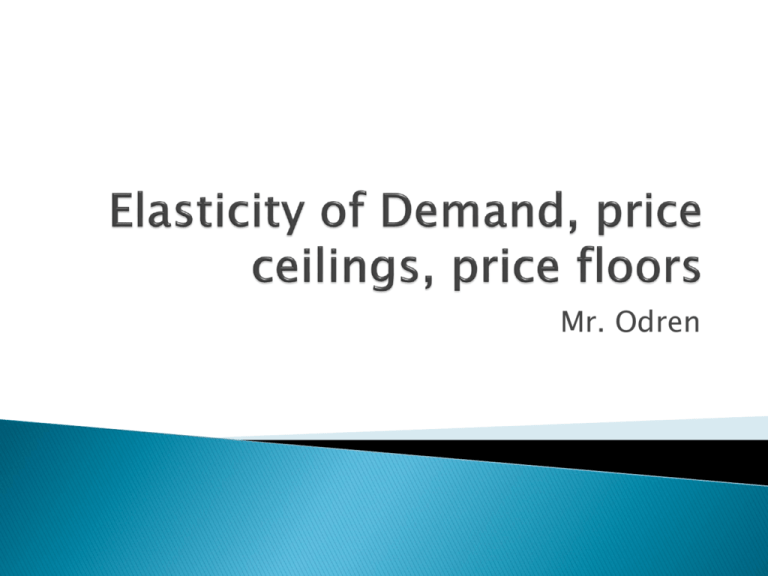
Mr. Odren Refers to price responsiveness The measure of the price elasticity of demand is how much consumers respond to a given change in price. Economists measure the reaction of consumers to changes in prices This measurement is called….PRICE ELASTICITY OF DEMAND!!!! Demand is not affected by changes in price. The good/service is a MAJOR necessity. There are no satisfactory substitutes for the specific good/service. o Ex: Gasoline for automobiles. o Regardless of the price, people still demand the same amount of gasoline every week. o Ex: Insulin to a diabetic. If they don’t buy it they may die. Will pay the price of Insulin Mathematically, inelastic goods and services have a price elasticity of demand that is less than 1. This is what an inelastic good/service looks like when graphed….. Here are some examples of inelastic goods… Salt – (small % of consumer income, few substitutes) Matches – (small % of consumer income) Toothpicks – (small % of consumer income) Gasoline – Coffee – Tobacco products – Automotive transportation – Insulin – A rise or fall in the price of a product GREATLY affects the amount which people are willing to buy. Goods that do have sufficient substitutes are considered “elastic”. The good and/or service is not a major necessity. This means that if the price of an elastic good increases too much, then consumers will purchase a substitute good and be just as satisfied… Example of an Elastic Good o Meals at a restaurant o $15.99 Chicken Alfredo at Olive Garden o Substitute for a cheaper meal o Cook at home Mathematically, elastic goods and services have a price elasticity of demand, greater than 1. This is what an “elastic” good looks like when graphed…. Below are some examples of Elastic…. Private education – Meals at a restaurant – Ford cars – Movie tickets St. Thomas vacation Fresh Tomatoes – 1. Existence and similarity of substitutes 2. Percentage of a person’s total budget devoted to the purchases of that good o More substitutes, more responsive consumers will be to a change in price. o Ex: Diet Coke/Diet Pepsi o If you do not spend much of your total budget on a particular good, you will probably not often notice increases in the price of that good. (toothpicks, matches, salt) 3. Time allowed for the consumer to adjust to the price change. o Takes a longer time to adjust to a new price o Longer time needed…greater price elasticity of demand Yes!!! Price Floor and Price Ceiling If the government wants to establish a minimum price for a good/service, it is called a price floor. If the government wants to establish a maximum price for a good/service, it is called a price ceiling. Remember, U.S. not a pure Market economy, but Mixed (Free Market AND Gov’t) PRICE CEILINGS Always BELOW equilibrium & cause Shortage!! What does this mean? Keeps demand high Benefits consumers Producers lose money Ex. Rent controls for apartments, at times gas prices PRICE FLOORS Always ABOVE equilibrium & cause Surplus!! Benefits Producers Consumers lose – have to pay higher prices Ex. Agriculture crop prices, Min. Wage law PRICE CEILING PRICE FLOOR Video clip on impact of rent control. Is it really the most effective way to help people afford housing? Does it have unintended consequences?


